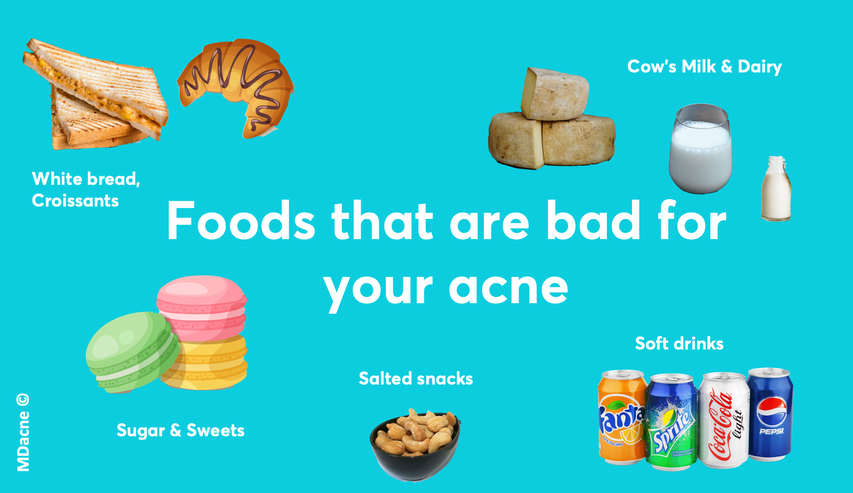Six foods that can cause acne

The Impact of Diet on Acne: Foods to Avoid for Clearer Skin
Acne breakouts are influenced by various factors, including excess sebum (oil) production, acne-causing bacteria, hormonal fluctuations, blocked pores, and inflammation. However, emerging research highlights the significant role diet plays in skin health. If you're aiming for clearer skin, consider addressing the issue from the inside out. Here are six food groups to avoid and their healthier alternatives.
1. Dairy Products
Dairy cows are often treated with artificial hormones to boost milk production. Consuming this milk may disrupt insulin levels, leading to hormonal spikes that can trigger acne. Additionally, some studies suggest that proteins in animal milk can exacerbate acne-causing hormones, as they are difficult for humans to digest.
Better Alternatives: Almond milk, cashew milk, coconut milk, and rice milk.
2. Soy Products
Soy-based foods like tofu, soy milk, and soy protein contain phytoestrogens, plant compounds that mimic estrogen. Excessive consumption can disrupt the body’s natural estrogen balance, potentially increasing androgen levels (male hormones). Higher androgen levels stimulate oil production, clogging pores and contributing to acne. Soy may also cause inflammation and hinder nutrient absorption, further aggravating breakouts.
Better Alternatives: Fermented chickpeas, mushrooms, fresh lima beans, coconut milk, and hemp milk.

3. Refined Grains
Refined carbohydrates, such as white bread, pasta made with white flour, and white rice, are high on the glycemic index. These foods cause rapid spikes in blood sugar, triggering increased androgen production and sebum secretion, both of which contribute to acne flare-ups.
Better Alternatives: Quinoa, millet, oats, barley, farro, and bulgur.
4. Sugar
Regular consumption of added sugars raises the risk of acne by 30%, as studies have shown. Sugar causes insulin spikes that accelerate skin cell growth and sebum production, leading to clogged pores and breakouts.
Better Alternatives: Pure maple syrup, raw honey, and Stevia.
5. Fast Food
A “Western-style” diet rich in fast food—such as burgers, hot dogs, pizza, and fried snacks—has been strongly linked to acne. These foods are high in unhealthy fats, sodium, and calories, which can promote inflammation, increase oil production, and foster acne-causing bacteria.
Better Alternatives: Home-prepped meals like whole-grain bowls, salads, smoothies, and vegetable stir-fries.
6. Seaweed and Kelp
Seaweed, especially kelp, is a lesser-known acne trigger due to its high iodine content. While iodine is essential for thyroid health, excessive intake can irritate sebaceous glands and clog pores, leading to breakouts, particularly around the mouth.
Better Alternatives: Limit iodine-rich foods and incorporate balanced sources of nutrients in your diet.
Conclusion
Your diet plays a critical role in managing acne. Avoiding these problematic food groups and replacing them with healthier alternatives can help reduce breakouts and improve skin clarity. While diet alone may not completely cure acne, it’s a significant step toward clearer, healthier skin. Pair dietary changes with a consistent skincare routine and consult a dermatologist for optimal results.
References:
- Acne: the role of medical nutrition therapy
- Glycemia and insulinemia in healthy subjects after lactose-equivalent meals of milk and other food proteins: the role of plasma amino acids and incretins
- Diet and Dermatology
- Effect of soymilk consumption on serum estrogen concentrations
- Acne vulgaris: a disease of Western civilization
To find the right acne treatments for your unique skin, take the free skin assessment by clicking here.



